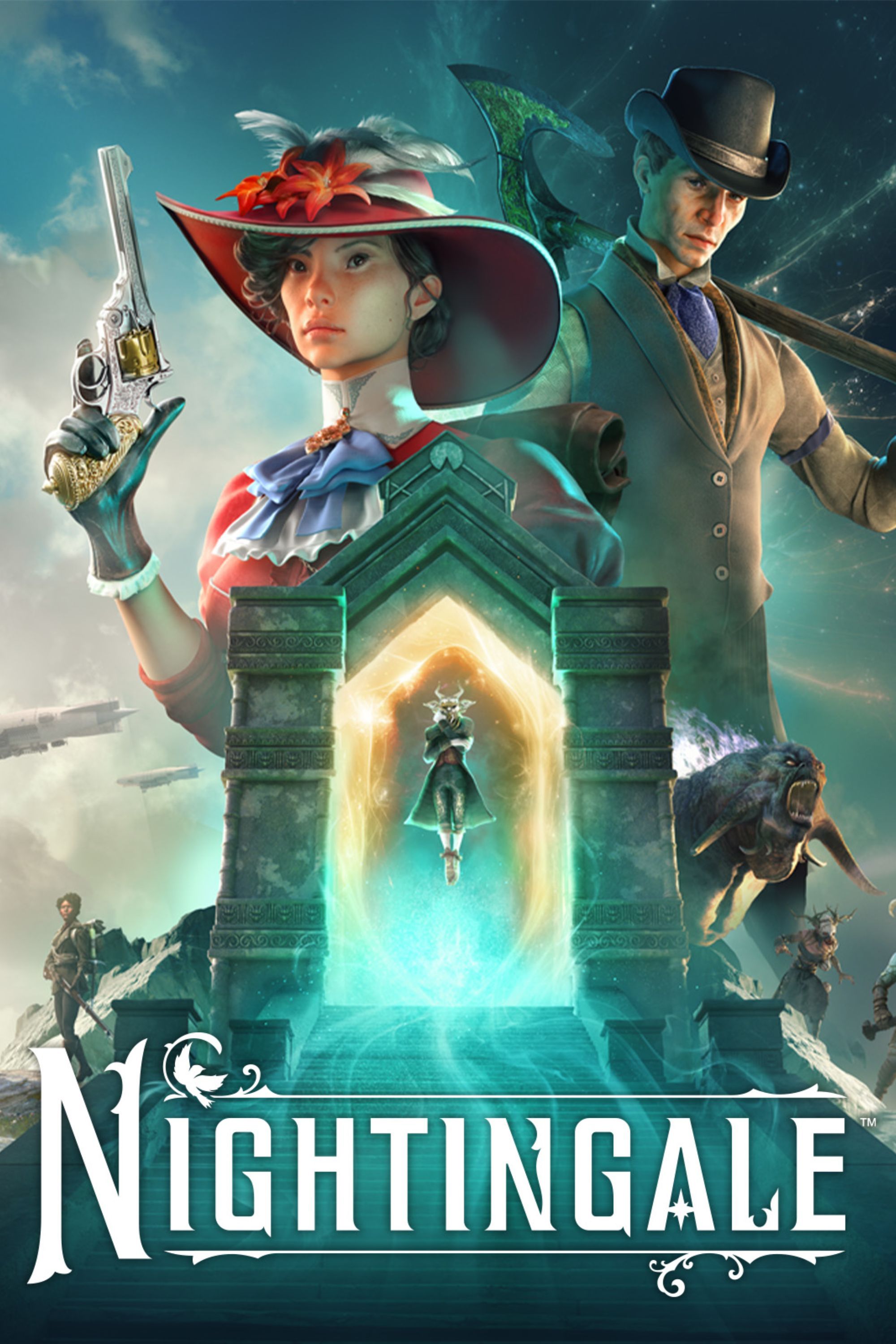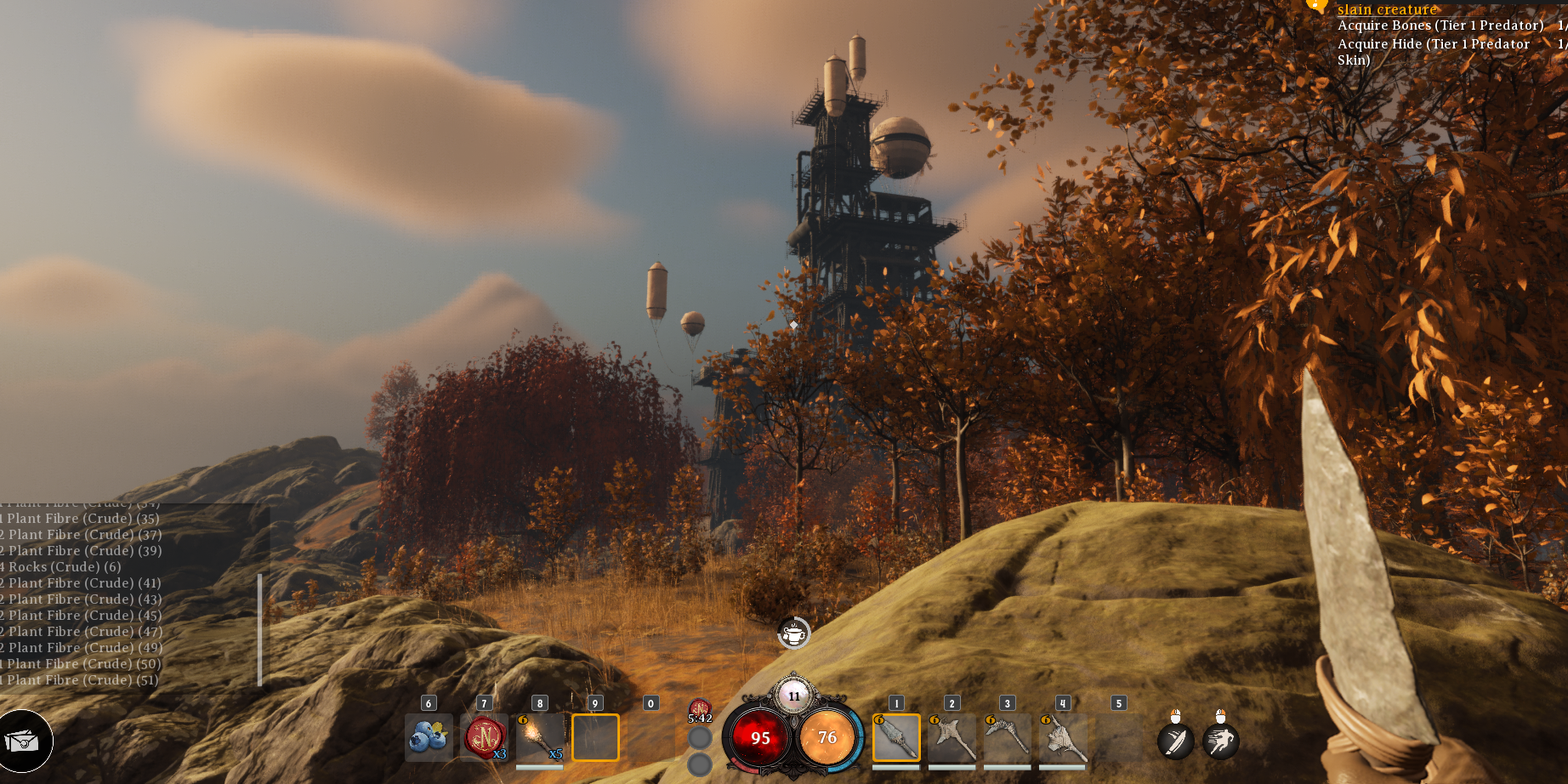Highlights
- Nightingale offers a familiar yet innovative survival crafting experience, with hand-holding tutorials and unique realm cards to explore diverse biomes.
- Resource gathering and crafting feel streamlined and enjoyable, allowing players to plan out and construct their own homesteads with ease.
- While Nightingale provides a unique Gaslamp fantasy setting and innovative mechanics, it still offers a solid foundation familiar to survival crafting fans.
If you’re a fan of survival crafting games, there are a lot of things to get excited for with the release of Nightingale on February 20. From the real-world tie-ins, with Earth’s divergent timeline; the inclusion of fey magic, and best of all, the innovative Realm Cards to carry you across the realms and transform them as you see fit, the game has a lot of great thematic and mechanical elements to set it apart from the crowd.
But all the innovation and worldbuilding a developer can muster means nothing if the game they’re placed in can’t stand up on its own two legs and nail the basics.
I love survival crafting games and their ability to immerse me in their worlds, from the fanciful, monster-filled Palworld to the desolate, watery landscape of Raft. Though they’re filled with their own unique takes on the genre, both of these games only got where they are because of a solid mechanical foundation of hunting, gathering, and crafting. So, how does Nightingale hold up in that category?
Stepping Into A New But Familiar World
In a presentation to the press before we were unleashed into the world of Nightingale, Aaryn Flynn, CEO of Inflexion Games, the game’s publisher and developer, said of the resource gathering and crafting aspects, “We weren’t looking to reinvent the wheel … but hopefully, it feels somewhat familiar.”
Once I was able to actually dive in to a pre-release build of the game, I found that statement to be completely true. Nightingale includes a prologue, which takes about 45 minutes to complete and will transport you through three different low-level realms, each with its own biome – forest, desert, and swamp, in that order. As I progressed through these realms, there was an appropriate amount of hand-holding, letting me know what my next objective was and how to complete it but letting me put in the work and go through the motions, all with the goal of teaching me the game’s basics that would let me survive in the fey realms.
And they were, as Flynn said, familiar. In the forest, I gathered sticks and loose stones on the ground to craft a shelter to protect me from a coming hailstorm, and I harvested berries from bushes, cooking them in the makeshift fire pit I’d built to save me from starvation. As I progressed through these early realms, I fashioned my sticks and stones into tools like axes and skinning knives, using them to chase down animals and harvest their meat and pelts to further prevent my own hunger from getting the better of me, and chopping down trees and pulverizing boulders with my homemade pickaxe to get bigger and better chunks of wood and rock.
Leaping Into A Realm All My Own
After learning to defend myself from some nasty bipedal reptiles and fiendish humanoids drawn by the portal’s energy (as well as rummaging through a few chests I found in some nearby ruins for some fun starter loot), it was finally time to use my first realm card and step through the portal once again, this time choosing the biome in which I’d be carving out my own cozy little homestead. I chose the forest because, hey, why not take it back to where it all began, and the umbrella (admittedly, another cool new feature I haven’t encountered in other survival crafting games) I’d found could protect me from the occasional hailstorm, which seemed easier to deal with than constant, blistering desert heat or fetid pools of diseased swamp water. (Turns out it holds off the sun’s rays in the desert too, but hindsight is 20/20, and I like trees.)
Once it was time to build my first home, choosing from simple wood or stone walls and floors (much more stylistic patterns can be unlocked as you progress through the story), I was met with another pleasant surprise. Nightingale let me lay out my building plans as I saw fit, even if I didn’t have the resources to construct them just yet. There were plenty of trees and boulders around and tall grasses growing in a pond at the bottom of the hill, giving me ample opportunity to gather everything I’d need for my little two-story bungalow, but it was too heavy to carry all at once.
As I trudged back to the construction site for the first time, I expected to have to approach each individual section of wall, flooring, and ceiling, as well as the staircase, depositing my gathered resources into each section one by one, because that’s just what games in this genre have taught me to expect. Instead, as I approached my glowing blue 3D blueprint, Nightingale prompted me to deposit what I’d collected so far into the project as a whole, and in an instant, certain sections of my house popped right into existence without making me do all the extra work and giving me a visual representation of what was still left to be done.
I’d already planned the whole thing out, after all, so why make me go to the effort of laying each floorboard? It was an unexpected combination of innovative ease-of-use and familiarity, and this simple action showed me how a game can take something basic and familiar and streamline it into an even more enjoyable experience.
So, How Does Nightingale Stack Up?
It may not be the coolest, flashiest aspect of any game, but the basics are important. While Nightingale does a lot to provide a unique experience, it’s still, at its core, an experience that should be familiar to fans of the survival crafting genre.
And that’s not a criticism, because being able to dive right in to the game’s basics without spending hours upon hours just learning how to crawl (metaphorically speaking, of course) lets the player really appreciate the gorgeous realms, their creative backstory, the little details peppered across their surfaces, and the new and fun innovative mechanics that really make it shine.
The game’s not burdensome, weighing you down with unnecessarily complex controls. It knows where to shine the spotlight as well as how to decorate the background in an appealing way without attracting undue distraction. That’s just good direction, and I appreciate it, because where it shines that light, I’m seeing stars.

Nightingale
Step into the shoes of a Realmwalker in this survival exploration game, where you’ll traverse the fae realm, craft, build, survive, and thrive with your friends against supernatural threats in Nightingale’s Gaslamp fantasy setting.
- Released
- February 20, 2024
- Developer
- Inflexion Games
[ad_2]






